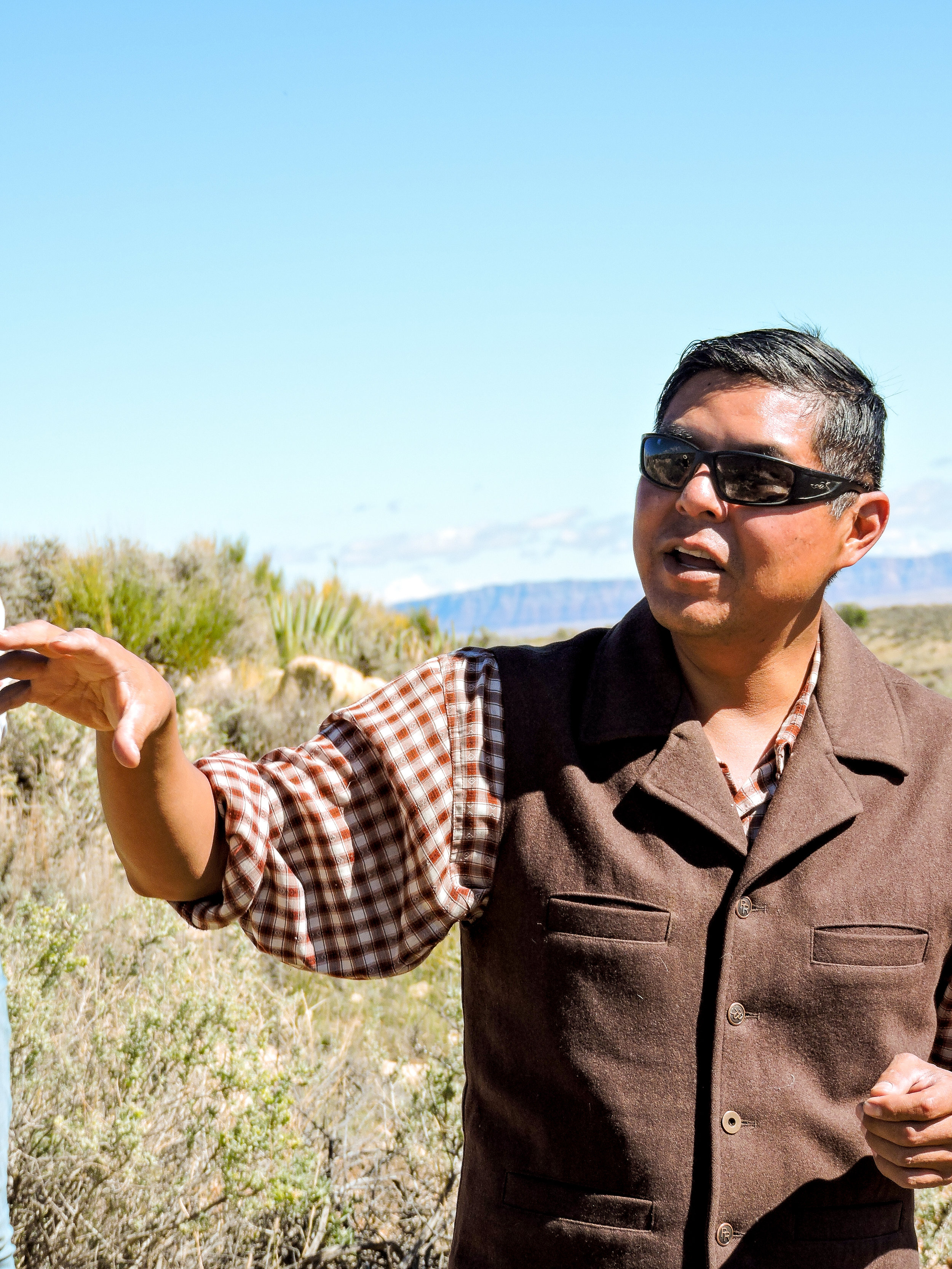Jason Nez
Archaeologist & Artist
Tuba City, AZ
10/9/18
We bounce, rattle, and roll with the potholes and washouts as we skip along the North Rim of the Grand Canyon, listening to the hits of the 80’s. Jason Nez is at the helm, a Navajo archaeologist who spent the day out in the field showing us archeological sites that consisted of old ruins, pot shards, and petroglyphs. Driving along, Jason flashes a broad grin as we pepper him with questions, he seems to have a thoughtful response to all of them and appreciates our enthusiasm for learning about archaeology and asking him why he dedicates his time to it. He believes in the power of sharing these sites, educating people on the history of them and current cultural traditions as a means of conserving resources and protecting them into the future. Jason’s passion stems from his desire for people to see that Native Americans have belonged as an integral part of the narrative in the history and future of this place. This is why he works to educate people about the importance of protecting cultural sites.
Jason emphasized that he wants others to see and feel the way he does when in a landscape or looking at a prehistoric site. He stated, “I want them to love these places. I want them to appreciate them, because when you love somewhere and when you love something, you will fight for it”. Jason’s breadth of knowledge and love for what he does stressed the importance of not taking projectile points, pottery shards, or remnants of other cultures home for one’s own selfish desires. Jason hammered home the necessity to leave artifacts in the dirt of the landscapes they inhabit, as they help to provide context, cultural significance and act as evidence highlighting the importance of native peoples.
By Liam Voorhees


